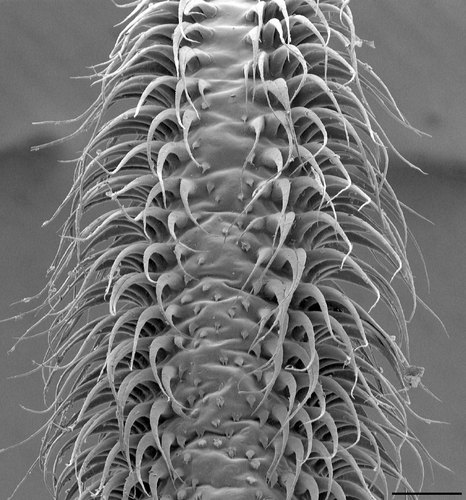You're looking at a scanning electron microscope image of a Pallas's
long-tongued bat. The hairs act as a "mop" to scoop up nectar.
Cally Harper and
Beth
Brainerd of Duke University found out exactly how such a weird tongue
works:
The researchers knew the bat tongues were covered with little hairs,
so they watched what happened to those hairs as the bats reached out
for food.
When the tongue is inside the bat's mouth, they found, the hairs lie
flat on the tongue's surface.
"And then very close to when the tongue is maximally extended,
these hairs become erect," Harper says. "And when that happens,
a space is created between each of the rows of hairs on the tongue tip.
And nectar is loaded onto each one of those spaces."
It's like the bat's tongue is working like a mop, Brainerd says. "Not
a sponge mop, but a stringy mop."
Brainerd says it turns out that each hair has blood vessels supplying
it. When the bat sticks its tongue out to feed, the muscles of the tongue
contract, pushing blood into the hair and making it stand on end. "The
mechanism is like an active mop that's opening up to make more space
for this liquid nectar to be collected," she says.
Rhitu Chatterjee of NPR's Morning Edition has the story:
Here.


No comments:
Post a Comment